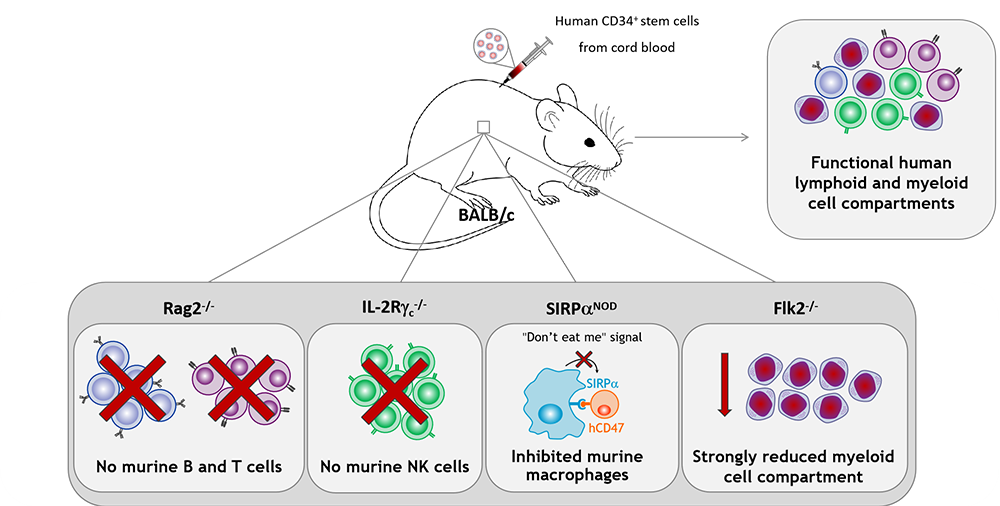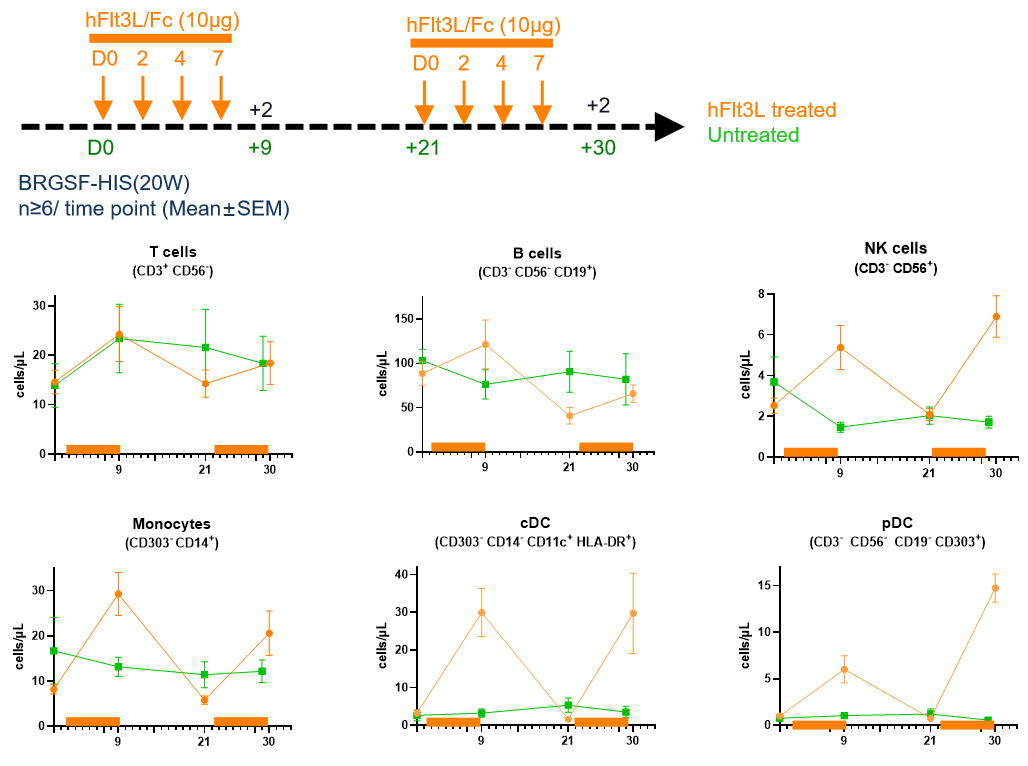BRGSF (BALB/c-Rag2tm1FwaIl2rgtm1CgnSirpαNODFlk2tm1lrl) 小鼠为重度免疫缺陷小鼠模型,其基本特征为鼠源T、B、NK细胞几乎缺失,小鼠髓系细胞组分无功能。在BRGSF小鼠上移植CD34+人造血干细胞 (hematopoirtic stem cell,HSC),经过长期重建(≥12周)可得到人源免疫系统 (human immune system, HIS) 重建小鼠模型:BRGSF-HIS。

BRGSF-HIS小鼠可重建出所有主要的人造血干细胞分化亚群:包括人源淋巴系细胞 (e.g., T、B、NK细胞)、人源髓系细胞组分(e.g., 传统的树突状细胞 (cDCs)、浆细胞样树突状细胞 (pDCs)、单核/巨噬细胞)。经hFlt3L处理可进一步促进人源免疫细胞,特别是髓系细胞组分的发育。
BRGSF-HIS小鼠HSC免疫重建12周,hCD45+细胞占比超过60%,且重建效果稳定(观察时间大于31周)。重建细胞主要为淋巴系细胞(T细胞,B细胞),髓系细胞含量较少。

每2-3天进行hFlt3L注射(持续1周),外周血中单核细胞 (Monocytes),树突状细胞(pDC and cDC) 含量明显升高,同时检测到NK细胞含量也有所增加。各细胞 (Monocytes/pDC/cDC/NK) 可经hFlt3L再次注射被重新刺激发育。

更多详细数据请联系我们:联系我们 - 基锘威 - genOway (my3w.com)